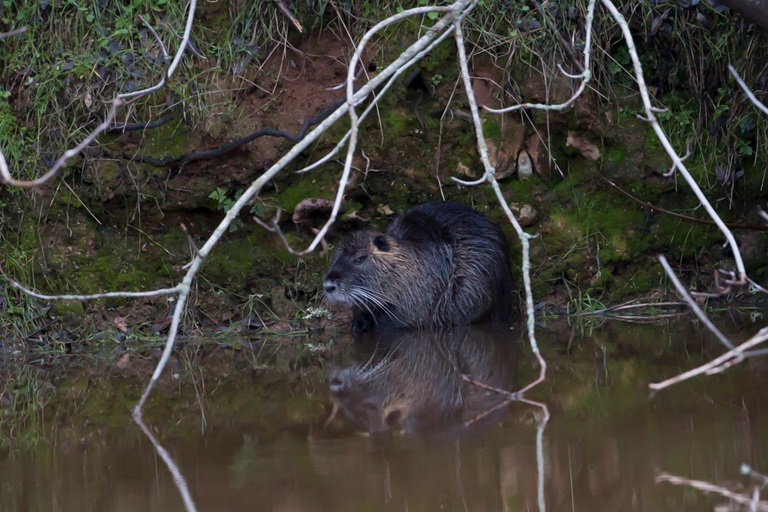California Invasive Species Action Week 2020
Image of nutria, a non-native rodent species. Nutria's burrowing behavior can drastically damage infrastructure and levees. Photo courtesy of CDFW. 
California Invasive Species Action Week, which takes place June 6 to 14, is a statewide campaign designed to educate the public on non-native species that threaten the State’s natural resources. Examples of these species include, alligator weed, nutria, phragmites, and quagga and zebra mussels. Nonnative plants and animals threaten clean water, flood prevention infrastructure, and natural ecosystems.
“Hundreds of invasive species have infiltrated California and continue to multiply and spread each year,” said Gina Darin, Department of Water Resources section chief of restoration planning and science. “Collectively, these non-native plants and animals – introduced at various times by humans – degrade habitat, outcompete native species, and obstruct waterways to interfere with boating.”
For the past seven years, DWR’s Division of Environmental Services (DES) has collaborated with other state agencies like California Department of Fish and Wildlife (CDFW) to record and document non-native invasive species and provide data and research that help influence control and eradication.
For this year’s Invasive Species Action Week, DWR is sharing information with the public on four species that threaten California’s water resources and potentially damage critical infrastructure built and maintained by DWR:
Alligator Weed
Alligator weed is a plant that has a known presence in the Sacramento-San Joaquin Delta and Feather River.
“Alligator weed is an invasive floating aquatic plant that grows in thick, dense clusters,” Darin said. “Thick mats created by these clusters can outcompete native plants, and remove the food source for certain animals. They can grow so big and thick that they block boat passage and shore access in some locations.”
Alligator weed is native to South America and was previously used in the aquarium trade. Bulldozers, boats, watercrafts, and animals easily detach green parts of the plant and transport them from one location to another. They can overtake ponds, lakes, streams, and canals.
Nutria
DWR is working to locate and manage the non-native rodent, nutria. Nutria look very similar to a beaver but have a distinguishable white muzzle and whiskers, along with a long round tail that resembles a rat’s, rather than the large, flat triangular tail of a beaver.
“Nutria feed on wetland plants, turning healthy marshes into open water,” Darin said. “With burrows ranging from three to 18-feet deep and extending up to 150 feet into the bank, their burrowing behavior can drastically damage infrastructure and levees.”
DWR’s Environmental Coordination Committee drafted an Infrastructure Protection Plan for Nutria and are implementing it with a team of expert staff in coordination with the CDFW Nutria Eradication Program.
Phragmites
Also known as, “the common reed”, phragmites is tall grass can reach up to 15-feet tall and clumps can be more than 10-feet wide.
Phragmites can change ecosystem structure by increasing tidal habitat elevations and reducing overall habitat quality, including disturbing the food chain by driving out native plants in the Delta that support wildlife such as waterfowl and the endangered salt marsh harvest mouse.
DWR staff are studying how best to control invasive phragmites while protecting endangered species in Suisun Marsh.
Quagga and zebra mussels
These invasive aquatic species are small but pose a mighty threat to California waterways. They can reach up to 1.5-inches, but more typically are the size of an adult’s thumbnail. They can clog pipes and other water moving equipment used for water delivery, like the California State Water Project (SWP), which is used to deliver water to 27 million Californians each year.
A mature female quagga mussel can produce up to 1 million eggs per year, allowing for rapid reproduction in a body of water. As adults, they can attach to boats with strong root-like threads and spread to new waterbodies. Mussels can also colonize in watercraft engines or on hulls and encrust docks and beaches. DWR funds quagga and mussel inspections at several waterways and reservoirs each year and DWR’s Operation and Maintenance Division works to keep invasive mussels from spreading in the SWP.
